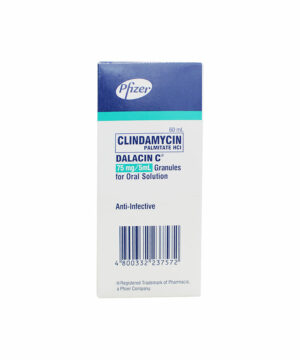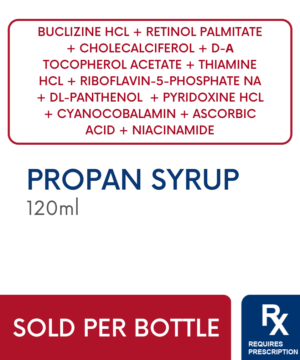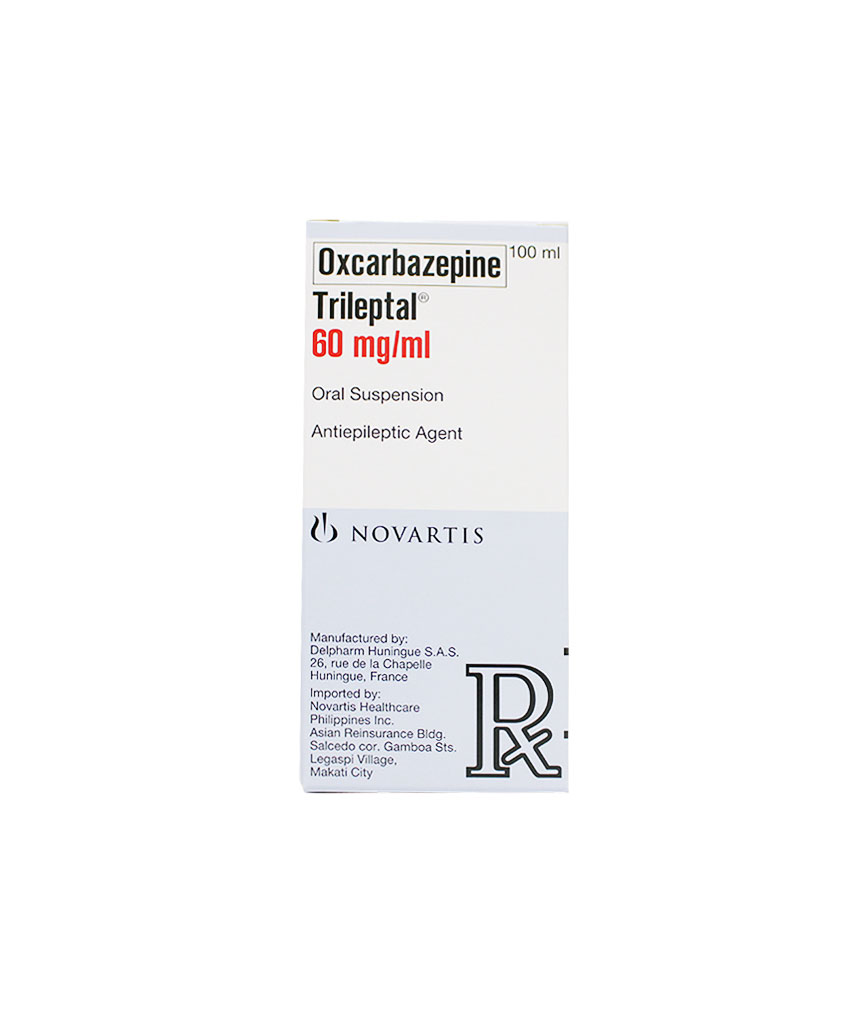Description
KLARICID OD 500MG TABLET
Description :
Klaricid 250- and 500-mg film-coated tablet also contains the following inactive ingredients: Dyes, coatings, lubricants, fillers.
Klaricid OD tablet also contains the following inactive ingredients: Anhydrous citric acid (to adjust the pH), sodium alginate, sodium calcium alginate, lactose, povidone K30, talc, stearic acid, magnesium stearate, 6-methylhydroxy propylcellulose, polyethylene glycol, titanium dioxide, yellow dye E104, aluminum lake and sorbic acid.
The modified release (MR) tablet is a homogenous matrix which provides sustained release during its transit through the gastrointestinal tract.
Clarithromycin is a semisynthetic macrolide antibiotic obtained by substitution of a CH3O group for the hydroxyl (OH) group at position 6 in the erythromycin lactonic ring. Specifically, clarithromycin is 6-O-methyl erythromycin A with a molecular weight of 747.96.
Clarithromycin is a white to off-white antibiotic powder, bitter, practically odorless, essentially insoluble in water and slightly soluble in ethanol, methanol and acetonitrile.
Indications / Uses?:
Treatment of the following infections due to susceptible organisms: Lower respiratory tract infections (eg, bronchitis, pneumonia); upper respiratory tract infections (eg, pharyngitis, sinusitis); skin and soft tissue infections (eg, folliculitis, cellulitis, erysipelas). Clarithromycin IR: Treatment of disseminated or localized mycobacterial infections due to Mycobacterium avium or Mycobacterium intracellulare; localized infections due to Mycobacterium chelonae, Mycobacterium fortuitum or Mycobacterium kansasii.
Prevention of disseminated Mycobacterium avium complex infection in HIV-infected patients with CD4 lymphocyte counts =100/mm3.
Clarithromycin in the presence of acid suppression is also indicated for the eradication of H. pylori resulting in decreased recurrence of duodenal ulcer (see Pharmacology: Pharmacodynamics: Clinical Studies under Actions).
Treatment of odontogenic infections.
Administration :
May be taken with or without food: OD tab: Take w/ meals. Swallow whole, do not chew/crush. May be taken w/ milk.
Contraindications?:
Known hypersensitivity to macrolide antibiotic drugs or any of the excipients of Klaricid.
Concomitant administration of clarithromycin and any of the following drugs is contraindicated: Astemizole, cisapride, pimozide, terfenadine as this may result in QT prolongation and cardiac arrhythmias including ventricular tachycardia, ventricular fibrillation and Torsade de pointes; ergotamine or dihydroergotamine, as this may result in ergot toxicity.
Clarithromycin MR: It should not be given to patients with history of QT prolongation or ventricular cardiac arrhythmia, including Torsade de pointes (see Precautions and Interactions).
It should not be used concomitantly with HMG-CoA reductase inhibitors (statins), lovastatin or simvastatin, due to the risk of rhabdomyolysis. Treatment with these agents should be discontinued during clarithromycin treatment (see Precautions and Interactions).
Concomitant use of colchicine in patients with renal or hepatic impairment who are taking P-glycoprotein or a strong CYP3A4 inhibitor.
As the dose cannot be reduced from 500 mg daily, clarithromycin MR is contraindicated in patients with CrCl <30 mL/min. All other formulations may be used in this patient population.
Special Precautions?:
Long-term use may, as with other antibiotics, result in colonization with increased numbers of nonsusceptible bacteria and fungi. If superinfections occur, appropriate therapy should be instituted.
Pseudomembranous colitis has been reported with nearly all antibacterial agents, including macrolides, and may range in severity from mild to life-threatening. Clostridium difficile-associated diarrhea (CDAD) has been reported with use of nearly all antibacterial agents including clarithromycin and may range in severity from mild diarrhea to fatal colitis. Treatment with antibacterial agents alters the normal flora of the colon, which may lead to overgrowth of Clostridium difficile. CDAD must be considered in all patients who present with diarrhea following antibiotic use. Careful medical history is necessary since CDAD has been reported to occur over 2 months after the administration of antibacterial agents.
Exacerbation of symptoms of myasthenia gravis has been reported in patients receiving clarithromycin therapy.
Clarithromycin is principally excreted by the liver. Therefore, caution should be exercised in administering the antibiotic to patients with impaired hepatic function. Caution should also be exercised when administering clarithromycin to patients with moderate to severe renal impairment.
Colchicine: There have been post-marketing reports of colchicine toxicity with concomitant use of clarithromycin and colchicine, especially in the elderly, some of which occurred in patients with renal insufficiency. Deaths have been reported in some such patients (see Interactions).
Caution is advised regarding concomitant administration of clarithromycin and triazolobenzodiazepines eg, triazolam and midazolam (see Interactions.)
Due to the risk of QT prolongation, clarithromycin should be used with caution in patients with medical condition associated with an increased tendency toward QT prolongation and Torsade de pointes.
Attention should also be paid to the possibility of cross resistance between clarithromycin and other macrolide drugs, as well as lincomycin and clindamycin.
Clarithromycin MR: Caution is advised in patients with severe renal insufficiency.
Hepatic dysfunction, including increased liver enzymes and hepatocellular and/or cholestatic hepatitis, with or without jaundice, has been reported with clarithromycin. This hepatic dysfunction may be severe and is usually reversible. In some instances, hepatic failure with fatal outcome has been reported and generally has been associated with serious underlying diseases and/or concomitant medications. Discontinue clarithromycin immediately if signs and symptoms of hepatitis occur eg, anorexia, jaundice, dark urine, pruritus or tender abdomen.
Use of any antimicrobial therapy eg, clarithromycin to treat H. pylori infection may be selected for drug-resistant organisms.
Pneumonia: In view of the emerging resistance to Streptococcus pneumoniae to macrolides, it is important that sensitivity testing be performed when prescribing clarithromycin for community-acquired pneumonia. In hospital-acquired pneumonia, clarithromycin should be used in combination with additional appropriate antibiotics.
Skin and Soft Tissue Infections of Mild to Moderate Severity: These infections are most often caused by Staphylococcus aureus and Streptococcus pyogenes, both of which may be resistant to macrolides. Therefore, it is important that sensitivity testing be performed. In cases where ?-lactam antibiotics cannot be used (eg, allergy), other antibiotics eg, clindamycin may be the drug of 1st choice. Currently, macrolides are only considered to play a role in some skin and soft tissue infections eg, those caused by Corynebacterium minutissimum (erythrasma), acne vulgaris and erysipelas, and in situations where penicillin treatment cannot be used.
In the event of severe acute hypersensitivity reactions eg, anaphylaxis, Stevens-Johnson syndrome, toxic epidermal necrolysis, DRESS and Henoch-Schonlein purpura, clarithromycin therapy should be discontinued immediately and appropriate treatment should be urgently initiated.
Clarithromycin should be used with caution when administered concurrently with medications that induce the cytochrome CYP3A4 enzyme (see Interactions).
Oral Hypoglycemic Agents/Insulin: The concomitant use of clarithromycin and oral hypoglycemic agents and/or insulin can result in significant hypoglycemia. With certain hypoglycemic drugs eg, nateglinide, pioglitazone, repaglinide and rosiglitazone, inhibition of CYP3A enzyme by clarithromycin may be involved and could cause hypoglycemia when used concomitantly. Careful monitoring of glucose is recommended.
Oral Anticoagulants: There is a risk of serious hemorrhage and significant elevations in international normalized ratio (INR) and prothrombin time when clarithromycin is co-administered with warfarin. INR and prothrombin times should be frequently monitored while patients are receiving clarithromycin and oral anticoagulants concurrently.
HMG-CoA Reductase Inhibitors: Concomitant use of clarithromycin with lovastatin or simvastatin is contraindicated (see Contraindications). As with other macrolides, clarithromycin has been reported to increase concentrations HMG-CoA reductase inhibitors. Rare reports of rhabdomyolysis have been reported in patients taking these drugs concomitantly. Patients should be monitored for signs and symptoms of myopathy.
Rare reports of rhabdomyolysis have also been reported in patients taking atorvastatin or rosuvastatin concomitantly with clarithromycin. When used with clarithromycin, atorvastatin or rosuvastatin should be administered in the lowest possible doses. Adjustment of the statin dose or use of a statin that is not dependent on CYP3A metabolism (eg, fluvastatin or pravastatin) should be considered.
Effects on the Ability to Drive or Operate Machinery: There are no data on the effect of clarithromycin on the ability to drive or use machines. The potential for dizziness, vertigo, confusion and disorientation which may occur with the medication, should be taken into account before patients drive or use machines.














Reviews
There are no reviews yet.